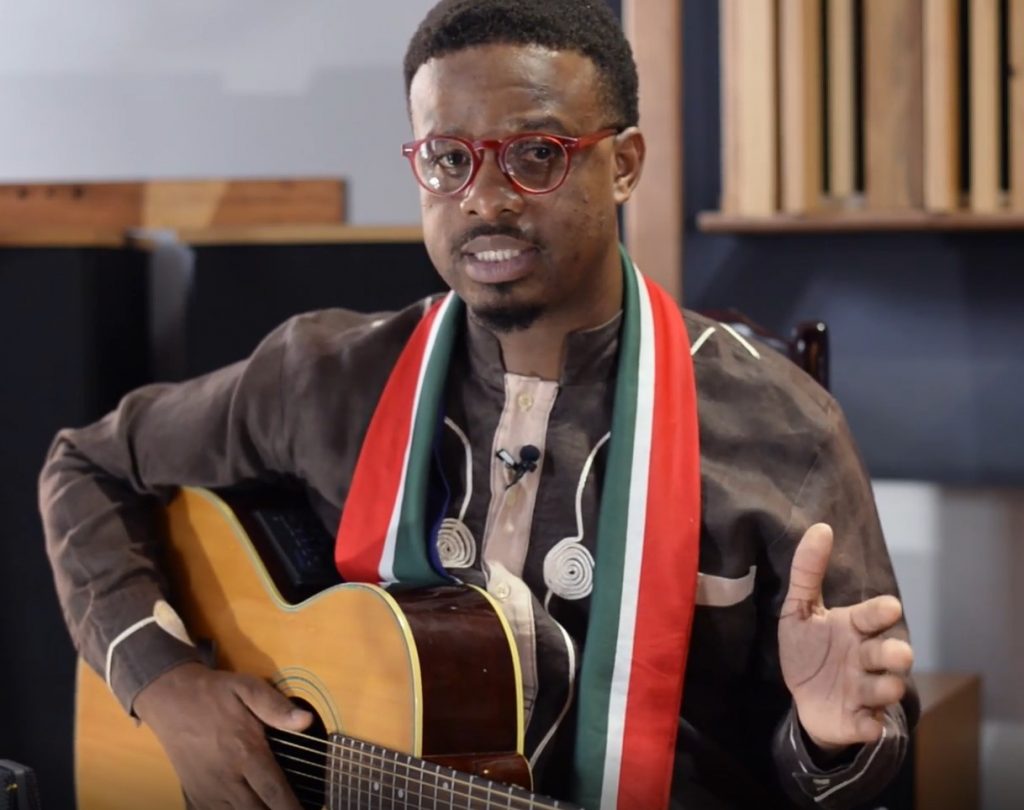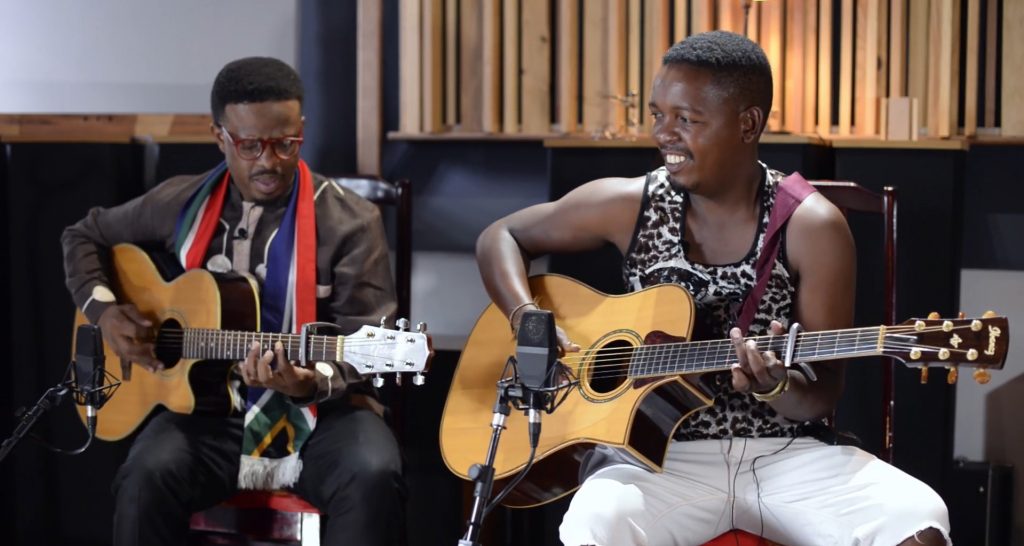Guitarist, Composer, Arranger and Researcher Billy Monama presents you with the first instalment tutorial video – “Introduction to South African Guitar Styles vol.1”. In this brilliant tutorial we look into beautiful and exciting South African distinctive style of music – Maskanda and its techniques from popular sub-styles such as isiZulu, is’Khuze, isiChucnu, isiPoyinandi, um’Mbabane, uMzansti, IsiMpondo, isiShiyameni.
Trailer
Maskanda guitar style is an old style influenced by the street players, with its precedent in umakhweyana, isitolotolo, ugubhu, isicelekeshe and abadlokwe styles of playing. In the 1940s and 1950s, a particular style of itinerant guitarists appeared on street corners in the townships of Zimbabwe (then Southern Rhodesia) and South Africa. They were known as omasiganda in isiNdebele and maskanda in isiZulu, borrowing from the Afrikaans word for musician, musikant. They could be found performing in beer halls, tucked away in amatipati (tea party) speakeasies, and busking in the mbombela 4th-class cabins on the railway. Maskanda was developed to fill the vacuum left by the abandonment of traditional instruments in the urban workplaces. In the 1950s John Bhengu, who was influenced by Hadebe, appeared in KwaZulu Natal and began winning street guitar competitions with his innovative ‘picking’ (ukupika) style.

The structure of Maskanda songs always begin with the characteristic of identifying the intela or izihlabo– an improvised instrumental introduction; a repetitive vocal chorus where all sing in harmony; a vocal narrative where the lead tells a story; and the ukubonga, where an interjection of praise, usually for the musicians or their clan, is rapidly announced and to courting or to flirt. The lyrical content is centred round zulu culture, religion and socio-political lives. The lyrics are mostly it sometimes speaks (sang) in metaphorical way.Acapella Pointers of the Maskanda 1927 – 1952 were notably Simon Sibiya, MAMEYEGUDI AND HIS DANCERS, ZULULAND WAR DANCERS THE ZULU MINSTRELand James Stuart, their style was based ukubonga or praise interjection so familiar in many maskanda so.

There were numerous (guitarist recorded in the 40s namely: The Guitar Twins, Petrus Mtambo, Caspar Shiki and his Guitar, Herman Magwaza. In the 1950s, Umame Maskanda that it features the violin. The track Marabi on the other hand is particularly unusual in that it features an electric guitar, which must be a unique for the time. While this proto-rock tune, in places, almost suggests aspects of an electrified maskanda and pointers were: Dan Shabane with Nyakaza MerryMakers, Cowbow Superman, Sidney Mkize, Cowboy Ndlovu, Sample Sixogo. In 1959 to 60s pointers: John Hlophe, Enoch Mahlobo, Cameron Mtetwa, Paul Khambula, Mahlauthini Luthuli, John Bhengu and Baca Boys.

In this chapter, we look at the fundamental Maskanda guitar techniques.:
- Tuning of guitar is D B G D A E, as opposed to western standard tuning E B G D A E. By detuning the E (first string) tone down, this will result to major with a b7 sound of the diatonic chord.
- The right-hand picking is of the drive force technique independent of this style, it is more virtuously played as almost like classical guitar. In addition, it is the counter line on the bass lower strings the E and A, usually the lower strings execute what the male bass singer would sing. Though the earlier players strummed.
- Capo: The use of the capo is for key transposition purposes so that the guitar produces the open strings sound, just like in relation with country music played on open strings and open chords.
- The essential use of the thumb and finger ring plectrum is that it gives the sound an optional warm and brighter sound. Ring plectrum helps to produce the brighter sound, especially when playing with the band, yet the finger picking without the plectrum gives a warmer soft sound that mostly doesn’t cut through there is a electrified full band.
- Harmony -Maskanda uses mostly 4ths intervals and 5ths of the harmonic interval. Compositions and harmony are influenced by the geographical situation of a musician.
- Maskanda music is categorized into different sub-styles, differentiated according to the rhythms of different dance patterns. Each set of dance patterns is associated with a particular regional community and named accordinglyand here aresome of the popular styles; isiZulu, is’Khuze, isiChucnu, isiPoyinandi, um’Mbabane, uMzansti, IsiMpondo, isiShiyamen.
N.B: WE TUNED GUITARS SEMITONE UP FROM THE CONCERT KEY. WE TUNED BY EAR, MOST MASKANDA GUITARIST BELIEVE IN TUNING BY EAR AS USING TUNER.
